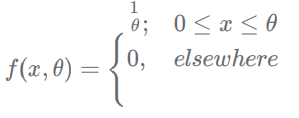Question
Which of the following enactments has not been amended
as part of the Insolvency and Bankruptcy Code, 2016?Solution
Acts repealed by the IBC are: - Presidency Towns Insolvency Act, 1909 Provincial Insolvency Act, 1920 IBC led to the amendment of 11 Legislations: - The Indian Partnership Act, 1932 The Central Excise Act, 1944 The Income-tax Act, 1961 The Finance Act, 1994 The Securitization and Reconstruction of Financial Assets and Enforcement of Security Interest Act, 2002 The Sick Industrial Companies (Special Provisions) Repeal Act, 2003 The Payment and Settlement Systems Act, 2007 The Limited Liability Partnership Act, 2008 The Companies Act, 2013
For the ANOVA which of the following options is INCORRECT.
1. Null hypothesis H0 : μ1 = μ2 = ... = μn
2. F ...
For the distribution with unknown θ

We set the tes...
The grouped data for the observation are as follows.
Class : 2-4 4-6 6-8<...
If ten coins are tossed simultaneously, then the probability of getting at most I head is:
If mean and mode of the distribution is 32 and 21, then the distribution:
For making frequency distribution, the number of classes used depends upon:
Which one is parameter from population?
The mean and median of the distribution are 10 and 11 respectively, then the mode equals to
The deseasonalised time - series data will have only trend (T), cyclical (C) and irregular (I) components and is expressed as:
If xi | fi , i = 1,2,...n is a frequency distribution with standard deviation 15 and mean 30, the coefficient of variation will be equal to:
Relevant for Exams:



